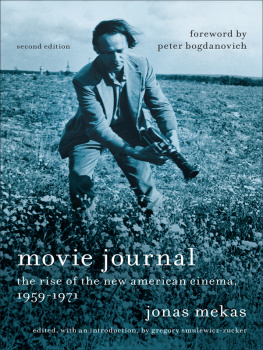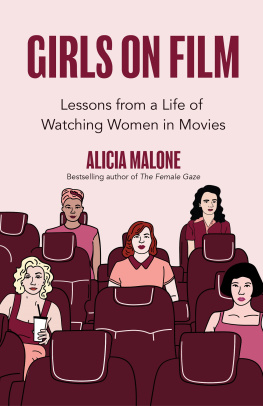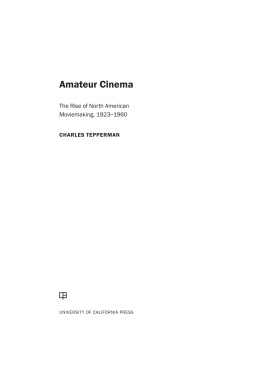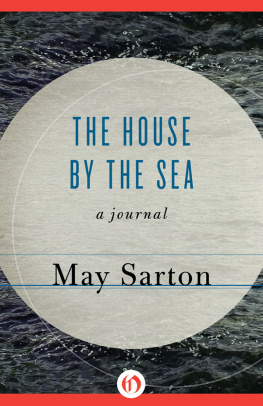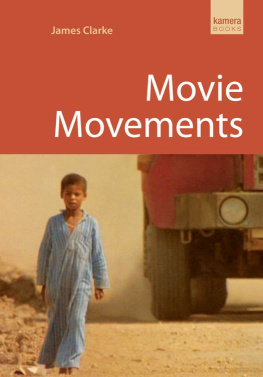Table of Contents
movie journal
FILM AND CULTURE
FILM AND CULTURE
A series of Columbia University Press
EDITED BY JOHN BELTON
For a list of titles in this series see
jonas mekas
FOREWORD BY PETER BOGDANOVICH
movie journal
second edition
the rise of the new american cinema, 19591971
edited, with an introduction, by gregory smulewicz-zucker
AND A NEW AFTERWORD BY JONAS MEKAS
COLUMBIA UNIVERSITY PRESS NEW YORK
Columbia University Press
Publishers Since 1893
New York Chichester, West Sussex
cup.columbia.edu
Copyright 2016 Jonas Mekas
Film still on page 159: Andy Warhol, Empire, 1964. 16mm film, black and white, silent, 8 hours 5 minutes at 16 frames per second. Copyright 2015 The Andy Warhol Museum, Pittsburgh, PA, a museum of Carnegie Institute.
All rights reserved.
E-ISBN 978-0-231-54158-9
Library of Congress Cataloging-in-Publication Data
Names: Mekas, Jonas, 1922- author. | Smulewicz-Zucker, Gregory R., 1983- editor.
Title: Movie journal : the rise of the new American cinema, 19591971 / Jonas Mekas ; foreword by Peter Bogdanovich ; edited, with an introduction, by Gregory Smulewicz-Zucker, and a new afterword by Jonas Mekas.
Description: Second edition. | New York : Columbia University Press, [2016] | Series: Film and culture | Selections from the authors column Movie journal published in the Village voice. | Includes bibliographical references and index.
Identifiers: LCCN 2015042439| ISBN 9780231175562 (cloth : alk. paper) | ISBN 9780231175579 (pbk. : alk. paper) | ISBN 9780231541589 (e-book)
Subjects: LCSH: Motion picturesUnited States. | Experimental filmsUnited StatesHistory and criticism.
Classification: LCC PN1993.5.U6 M35 2016 | DDC 791.430973dc23
LC record available at http://lccn.loc.gov/2015042439
A Columbia University Press E-book.
CUP would be pleased to hear about your reading experience with this e-book at .
Cover design: Jason Gabbert
References to websites (URLs) were accurate at the time of writing. Neither the author nor Columbia University Press is responsible for URLs that may have expired or changed since the manuscript was prepared.
Contents
PETER BOGDANOVICH
GREGORY SMULEWICZ-ZUCKER
PETER BOGDANOVICH
Jonas Mekas is a true revolutionary. While he most famously championed the avant-garde filmmakers of the world in the 1950s, 1960s, 1970s, 1980s, etc., he was also quite open to standing up for their absolute opposite. I remember, in the early 1960swhen Dan Talbot started reviving classic American movies at his New Yorker Theatre (now gone, alas), up in the theatres little office, Jonas used a thick marker to write on the wall: The best movies were made in Hollywood!
It reminds me of an exchange between Marlon Brandos character in The Wild One, and Mary Murphys character, who asks him: What are you rebelling against? Brando answers: What dya got?
Yes, Jonas is a revolutionary. He is a great believer in the importance of all film culture; in fact, he named his revolutionary, polemical, forward- and backward-looking magazine Film Culture. It was extremely influential, a kind of American Cahiers du Cinma, and kept alive by constant fundraising done mainly by Jonas himself.
At his priceless Anthology Film Archives, he has as much of film culture as he can get. There is already an extraordinary collection of books on cinema, and, of course, thousands of films. This is part of Jonass legacy and a great gift to Manhattan, and the world.
But then, mainly, besides being a born revolutionary, Jonas is a poet. He has a poets eye. Just look at the lengthy personal-journey pictures he has made, and you can very clearly see his humanist, melancholy, sometimes whimsical, always engaging personality and particular vision. Of course, he often writes like a poet, too.
For many years, Jonas had a column in the Village Voice called, Movie Journal. It became a fixture for hip film people. (Much of it is collected in this book.) Now remember, in that column, Jonas was the first to champion the brilliance of John Cassavetes, with Johns first feature as a director, Shadows (1959), the earliest flash of the new Hollywood that really took over in the later 1960s, the first Indie. It is no coincidence, either, that Cassavetes was one of precious few poets in American cinema. Maybe it takes a poet to spot a poet.
As a friend for decades nowwe met around 1958Jonas has always been encouraging to me, before I had even directed my first off-Broadway production in 1959. In fact, in the summer of 1961, Jonas and his dear brother Adolfas drove all the way from Manhattan to Phoenicia, N.Y. (upstate near Kingston and Woodstock) to see my production of Tennessee Williamss Camino Real. When I wrote pieces for Film Culture, I told Jonas I had to be paid something (a lot of material was done gratis because it was a nonprofit magazine), and he always did. Since I was living hand to mouth, that meant a lot.
Jonas has meant a lot to a great many people. He has pointed the way to good art in motion picture making, with an eclectic viewpoint. He has made some beautiful contributions to that rarely attempted genre of film as memoir. And all his efforts, all his writings, have been to preserve and protect and popularize film as an art form to be taken seriously.
GREGORY SMULEWICZ-ZUCKER
On the occasion of his ninetieth birthday, several friends and collaborators (myself included) were asked to write short appreciations of Jonas Mekass contributions to the arts. Mekass colleague, the film theorist and historian P. Adams Sitney, struck upon the problem of assessing Mekass work in the brief space granted us: Mekas has played a variety of roles that evade easy summary. This volume and introduction, however, has a more circumscribed goal. The purpose of the volume is to make Mekass long out-of-print 1971 collection of his pieces as the film critic for the Village VoiceMovie Journal: The Rise of the New American Cinemaavailable to a new generation of film students, scholars, and lovers. The aim of this introduction is to suggest why it is important to continue reading Mekass column forty years after he stopped writing it.
Mekass column was by no means a venue for conventional film criticism. The reader will find that Mekas seldom adhered to the format for film criticism that appeared at the time of its publication. Indeed, it is unlike the film criticism that is prevalent in many of todays newspapers, internet publications, or blogs. Mekas could write in the fashion of a disciplined critic, but his writing could also adopt a lyrical style. Such an approach was undoubtedly frustrating for a public that was and remains more comfortable with critics whose prescribed role is to say whether a film is good or bad. I will suggest that Mekass aim throughout his writing has been to compel his readers to think about and see films differently. For him, cinema is a vehicle for opening viewers to new forms of aesthetic experience. In my view, this is why Mekas reserved his scathing reviews for films that he felt reproduced mundane techniques or manipulatively played on sentiment, i.e., mainly those films produced by the studio system. At the same time, Mekas did not endorse novelty for its own sake. Then and now, his aesthetic sensibilities often enabled him to distinguish films that might serve to cultivate an expansion of aesthetic experience from those that were merely sensationalistic and cynical. As more and more artists search for techniques to garner public attention, Mekass appreciation for the emancipatory qualities of aesthetic experience proves to have been prescient.

